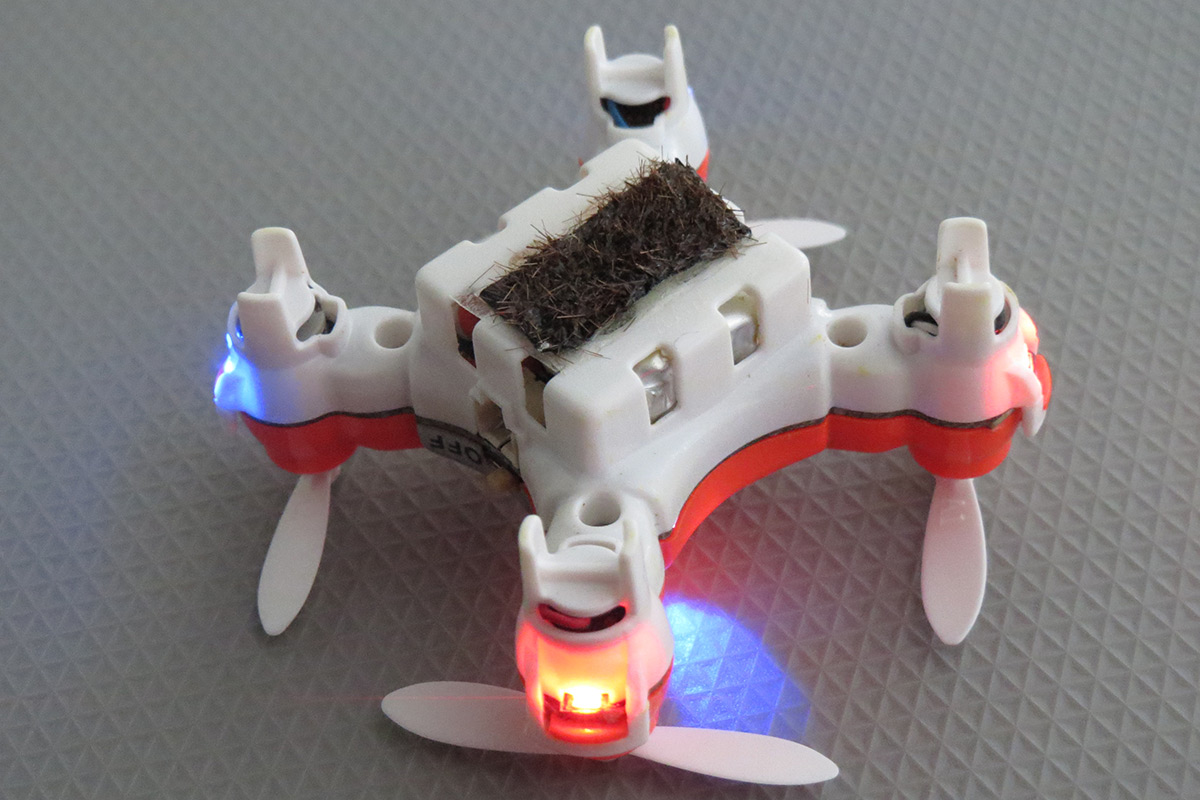
Eijiro Miyako
By Alice Klein
A drone that can pollinate flowers may one day work side by side with bees to improve crop yields.
About three-quarters of global crop species, from apples to almonds, rely on pollination by bees and other insects. But pesticides, land clearing and climate change have caused declines in many of these creatures, creating problems for farmers.
Pollination is needed for reproduction in flowering plants. Male flower parts, or stamens, produce pollen that fertilises female parts, known as pistils, to make seeds. In self-pollinating flowers, the stamen sheds pollen directly onto the pistil.
Cross-pollination, however, requires the transfer of pollen from one plant to another. This mostly relies on pollen becoming stuck to the bodies of bees and other insects when they feed on flowers, and then being deposited on the next plant they visit. It has advantages over self-pollination, in that it increases genetic diversity and improves the quantity and quality of crops.
Eijiro Miyako at Japan’s National Institute of Advanced Industrial Science and Technology, and his colleagues have used the principle of cross-pollination in bees to make a drone that transports pollen between flowers.
The manually controlled drone is 4 centimetres wide and weighs 15 grams. The bottom is covered in horsehair coated in a special sticky gel. When the drone flies onto a flower, pollen grains stick lightly to the gel, then rub off on the next flower visited.
In experiments, the drone was able to cross-pollinate Japanese lilies (Lilium japonicum). Moreover, the soft, flexible animal hairs did not damage the stamens or pistils when the drone landed on the flowers.
Flying free
Miyako says the team is now working on developing autonomous drones that could help farmers to pollinate their crops. GPS, high-resolution cameras and artificial intelligence will be required for the drones to independently track their way between flowers and land on them correctly, though it will be some time before all that is in place.
“We hope this will help to counter the problem of bee declines,” says Miyako. “But importantly, bees and drones should be used together.”

Eijiro Miyako
Saul Cunningham at the Australian National University in Canberra says that using drones to pollinate flowers is an intriguing idea but may not be economically feasible. “If you think about the almond industry, for example, you have orchards that stretch for kilometres and each individual tree can support 50,000 flowers,” he says. “So the scale on which you would have to operate your robotic pollinators is mind-boggling.”
Several more financially viable strategies for tackling the bee decline are currently being pursued, says Cunningham. These include better management of bees through the use of fewer pesticides, breeding crop varieties that can self-pollinate instead of relying on cross-pollination, and the use of machines to spray pollen over crops.
Journal reference: Chem, DOI: 10.1016/j.chempr.2017.01.008
No comments:
Post a Comment